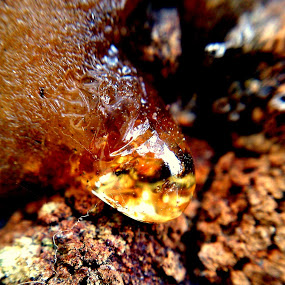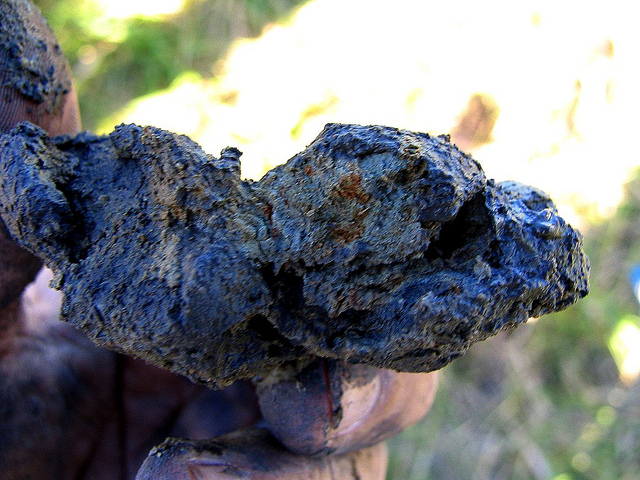 The formation of amber began millions of years ago, involving nature’s elements and climate changes. Back in prehistoric times, in a geographical zone known as Northern Europe today, sudden subtropical climate changes formed the perfect environment for the growing of conifers. Baltic amber originates from the tree resin of these conifers.
When the ice ages struck, Baltic amber was transported in the process of bed deposits formation, mainly because amber is light and weighs little. Many of today's amber stones actually relocated quite a lot during these natural environmental changes. It is important to know that amber was formed around 50 million years ago from coniferous trees, known as Pinites Succinitera in scientific works.
During the Palaegone period, south-western valleys originating from the Fenoskandivanian continent were the homes of many trees and coniferous forests. The ambient temperature grew warmer, generating high amounts of moisture, high air temperatures and over-secretion of tree resin, all due to changes in the climatic conditions, sea transgression and the influence of the Gulf Stream. Also during these extremely warm periods, forests were supplanted by tropical leaf trees, suitable to this warm climate. We know that the tree resin went into various stages of transformation before becoming amber. These stages include the polymerization, the oxidation, the isomerization, the fermentation and the ripening process in alkaline soil originating from the Sambian peninsula.
The formation of amber began millions of years ago, involving nature’s elements and climate changes. Back in prehistoric times, in a geographical zone known as Northern Europe today, sudden subtropical climate changes formed the perfect environment for the growing of conifers. Baltic amber originates from the tree resin of these conifers.
When the ice ages struck, Baltic amber was transported in the process of bed deposits formation, mainly because amber is light and weighs little. Many of today's amber stones actually relocated quite a lot during these natural environmental changes. It is important to know that amber was formed around 50 million years ago from coniferous trees, known as Pinites Succinitera in scientific works.
During the Palaegone period, south-western valleys originating from the Fenoskandivanian continent were the homes of many trees and coniferous forests. The ambient temperature grew warmer, generating high amounts of moisture, high air temperatures and over-secretion of tree resin, all due to changes in the climatic conditions, sea transgression and the influence of the Gulf Stream. Also during these extremely warm periods, forests were supplanted by tropical leaf trees, suitable to this warm climate. We know that the tree resin went into various stages of transformation before becoming amber. These stages include the polymerization, the oxidation, the isomerization, the fermentation and the ripening process in alkaline soil originating from the Sambian peninsula.
 Volatile terpenes evaporated from the secreted tree resin, resulting in a quick hardening process. In time floods and rains washed away the hardened tree resin along with forest soils into river streams and seas. There, the tree resin became “blue soil”, which is deposited glauconitic sea sand sediment. Amber was born below the sea surface in a soil formation known as “blue earth” and extracted by humans with the help of mining techniques. Of course, “blue earth” is but a generic name, as the formation actually has a greenish color generated by the amount of glauconite. Glauconite is a geologically marker clay, found only in saline marine climate, formed under anaerobic non-oxygenic conditions. Without any doubt, the tree resin was affected by physical and chemical factors and climate changes on a time span of millions of years. The climate changes altered the land and sea’s maps, so amber was influenced many times by sea actions, deposits of sediments and geographical relocation.
Today, the largest amounts of extracted Baltic amber deposits are found in the Samland Peninsula, the home of an ancient forest, and also a 400 square mile area situated near the Baltic Sea. The world’s largest amber deposits reside in the Peninsula of Sambia, in Kaliningrad, Russia, where blue soil is located 25-40 meters below ground level.
Volatile terpenes evaporated from the secreted tree resin, resulting in a quick hardening process. In time floods and rains washed away the hardened tree resin along with forest soils into river streams and seas. There, the tree resin became “blue soil”, which is deposited glauconitic sea sand sediment. Amber was born below the sea surface in a soil formation known as “blue earth” and extracted by humans with the help of mining techniques. Of course, “blue earth” is but a generic name, as the formation actually has a greenish color generated by the amount of glauconite. Glauconite is a geologically marker clay, found only in saline marine climate, formed under anaerobic non-oxygenic conditions. Without any doubt, the tree resin was affected by physical and chemical factors and climate changes on a time span of millions of years. The climate changes altered the land and sea’s maps, so amber was influenced many times by sea actions, deposits of sediments and geographical relocation.
Today, the largest amounts of extracted Baltic amber deposits are found in the Samland Peninsula, the home of an ancient forest, and also a 400 square mile area situated near the Baltic Sea. The world’s largest amber deposits reside in the Peninsula of Sambia, in Kaliningrad, Russia, where blue soil is located 25-40 meters below ground level.
Comments
No posts found



